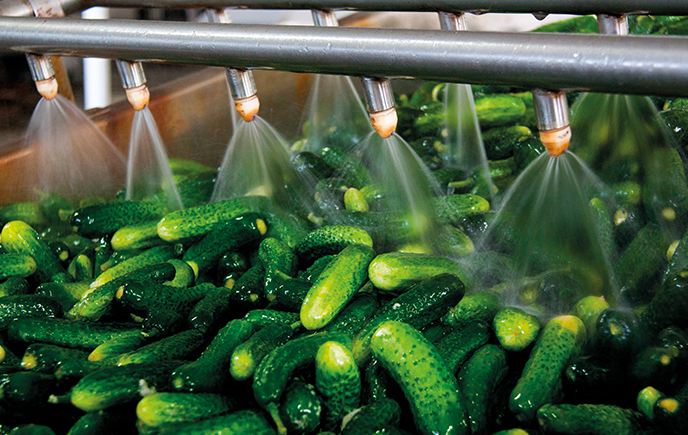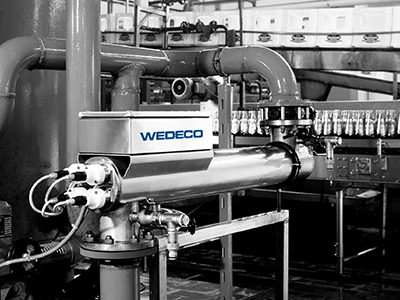Full steam ahead - Scottish distillery with Grundfos
There’s steam and there’s high-quality steam. There are pump solutions and intelligent pump solution...
The environment is the lifeblood of our planet, but it's become a pressing concern that it's not treated with the respect it rigthly deserves. It's a far cry from the condition it should be in. But by making subtle changes, and adopting greener processes, the ideal world in which we seek could become a step closer.

More recent times have seen companies and corporations, large and small, pushed to reconsider their practices, taking a more proactive approach with regards to:
And with these key points the cornerstone for decision making, time for change is upon us.

Today, more and more companies have begun, where possible, to move away from harmful chemical products, such as chlorine, reverting to non-disinfection products like Ultraviolet (UV) and Ozone (03 Tri-atomic oxygen).
Boasting a host of preferable benefits, UV - part of the electromagnetic spectrum - and Ozone, which provides a protective layer to our upper atmosphere, both products are naturally ocurring, with their individual benefits typically complementing one another.
Regulation and legislation are key drivers in the need for change to reduce impact on the environment, particularly in protecting our water courses and wastewater drainage systems. Many of our coastal waters are environmentally sensitive due to the diverse range of aquatic life, therefore strict guidelines are stipulated now more than ever.
The Urban Wastewater Directive has also made it compulsory to treat water beyond the point where it can damage the sewerage infrastructure, personnel or treatment processes in the future.

With health and safety such a high priority for businesses, and regulations continuously changing, UV and Ozone disinfection techniques greatly reduce, and regularly eliminate the many risks associated with handling hazardous materials.
In the case of cooling towers, a heat exchanger on an open loop system which has a biofilm layer, even as little as 1.2mm, will be reduced in efficiency by up to 43%. Here is where Ozone is the ideal treatment.
Not only will it remove the fouling from the heat exchanger plates, but it will also keep associated pipework clean, and reduce corrosion from microbial activity (MIC). In the long-term, this will also minimise downtime related to maintenance and repair.
In comparison, when using biocides on the same cooling towers, chemicals will need to be frequently changed, as the agent causing the fouling may become resistant. Through using Ozone treatment methods, you'll see a significant reduction in maintenance, component replacement and, most importantly, your time.


In the food and beverage industry, many fruits and vegetables are washed with ozonized water, killing the spores, mould and yeast that would otherwise spoil the produce. When comparing chlorine-based products against those that are Ozone treated, it's 50% stronger as an oxidizer, and acts 3000 times the speed.
Ultraviolet treatment also has its benefits for the food industry, as it doesn't affect or change the product, or cause any harmful byproducts. Research has also indicated that UV may extend the shelf life of fresh produce.
More advanced UV lamp technologies and processor controls mean that UV intensity can be reduced as required, which can lead to estimated savings of 20% on power consumption. Modern lamps for UV units, with low pressure and high output, will run consistently for up to 16,000 hours, making them more of a critical spare, rather than part of a routine service kit. While with Ozone units, the production generator has a 10-year plus warranty, meaning only the filters and seals are consumable parts.

Finally, with UV technology, a high level of guaranteed inactivation of unwanted microorganisms - such as Cryptosporidium in drinking water and legionella in water systems - can be achieved with modern validation techniques.
We often take for granted that our water supplies are clean, our air fit to breathe, and our food safe to eat. But one guarantee is that at somepoint in the day, you will be in contact with something that has been treated with either Ozone or Ultraviolet technology.
Get the latest updates from ERIKS including:
Choose any or all of these via the ERIKS Subscription Centre!
Our Know+How brings together the best of the latest Know+How Hub articles in one easy to digest magazine, covering the following topics:
That's why its the leading magazine for maintenance engineers from ERIKS.
Want Know+How Magazine delivered direct to your door? Visit the ERIKS Subscription Centre to opt-in!
Take a look at our latest updates...
There’s steam and there’s high-quality steam. There are pump solutions and intelligent pump solution...
Looking for a custom Product quote? Need an answer to a Technical question? Looking for Careers/HR support? Want to work with us? Interested in our Digital Trading solutions? Have a finance question? Send us your enquiry and a member of the ERIKS team will be with you quickly.
We strive to deliver exceptional quality service and products. As part of this goal, we encourage customers to submit feedback on their experiences so we can resolve any issues and concerns.
At ERIKS we strive to deliver the best quality service and products. As part of this goal we encourage customers to submit feedback on their experiences so we can resolve any issues and concerns.
Call us: +441215086000
